#Pastaza
Explore tagged Tumblr posts
Text


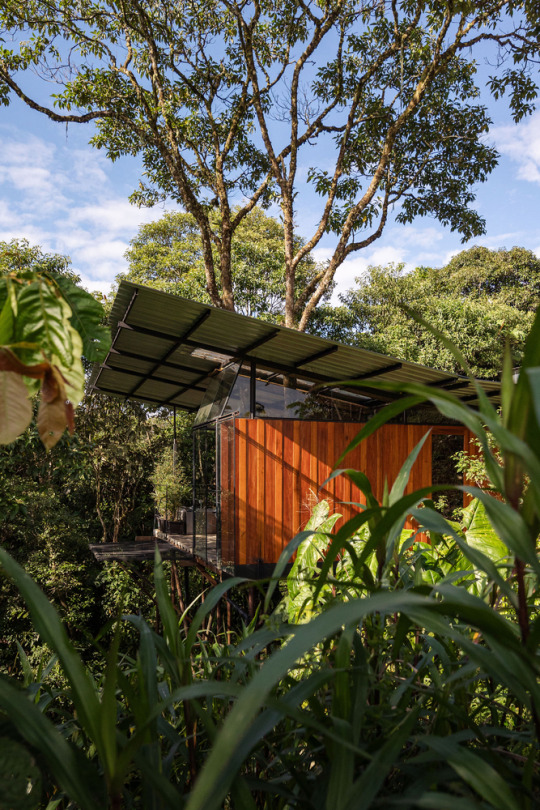
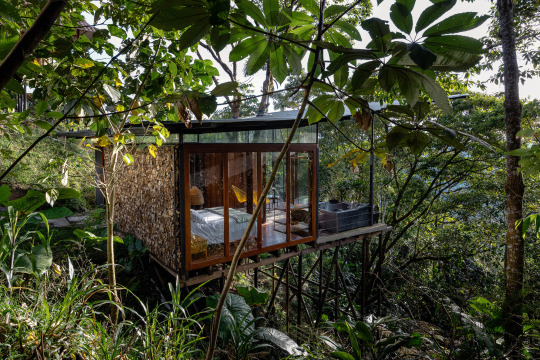
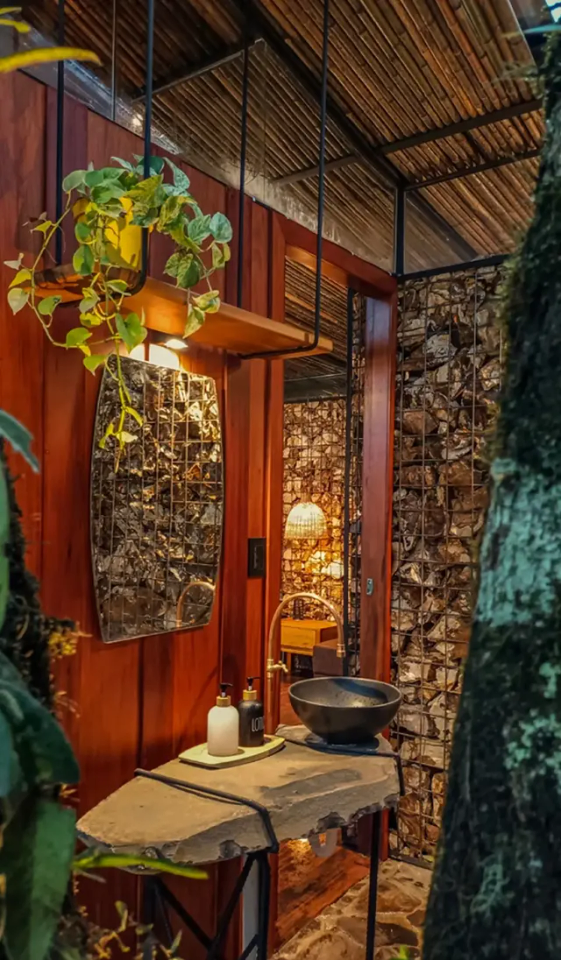


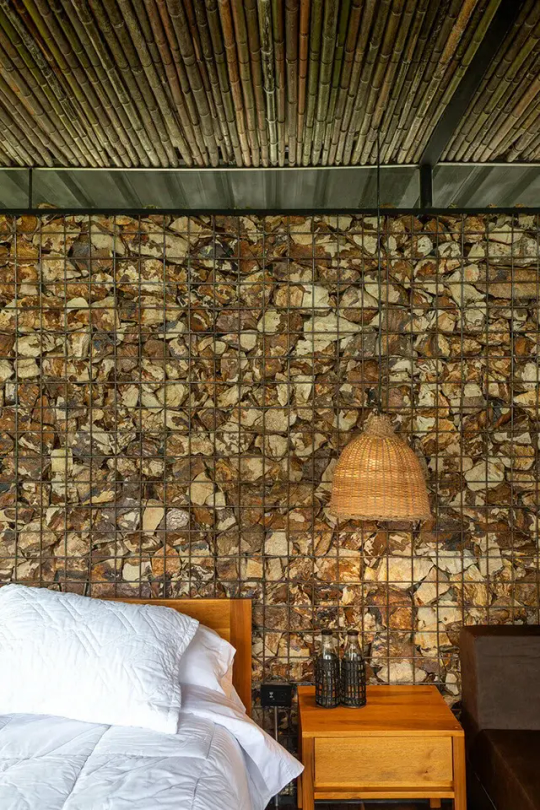
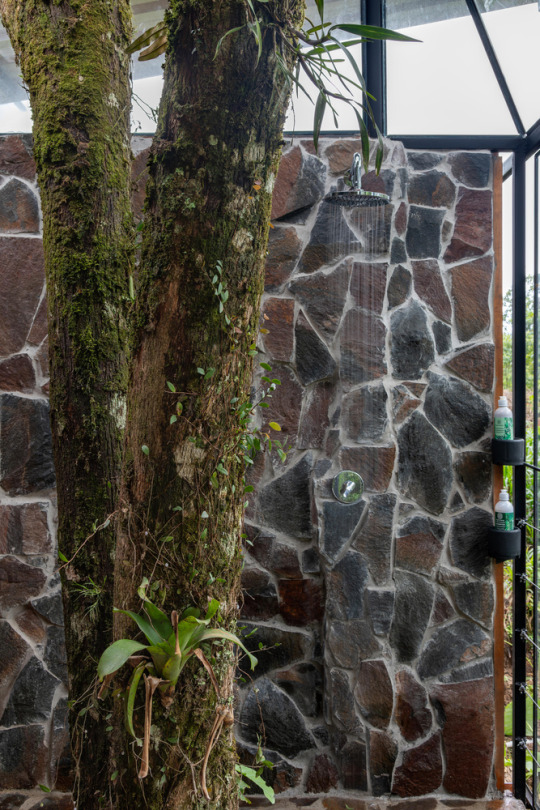
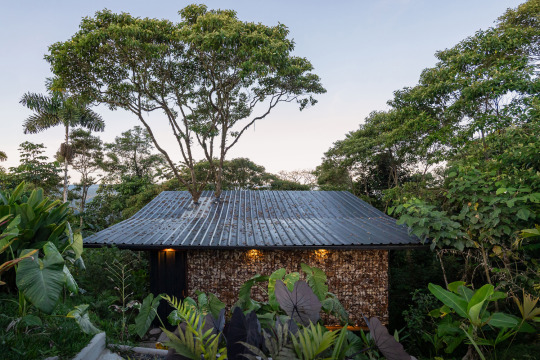
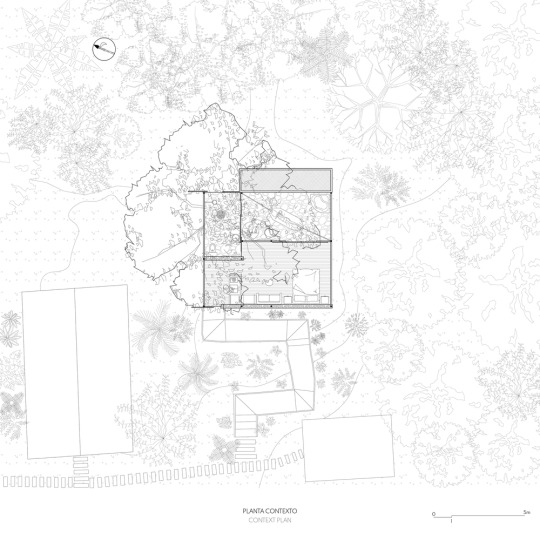
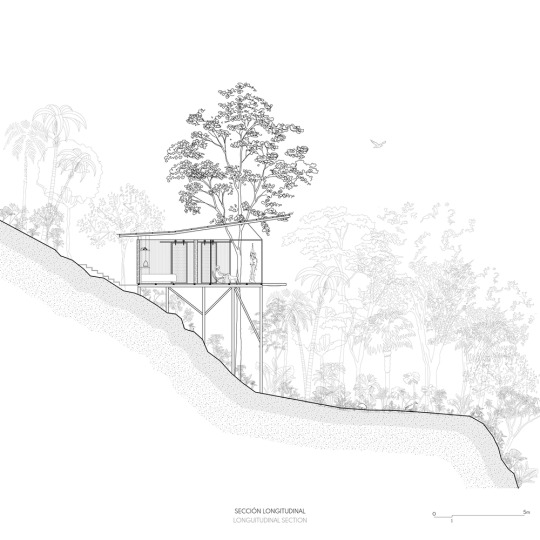
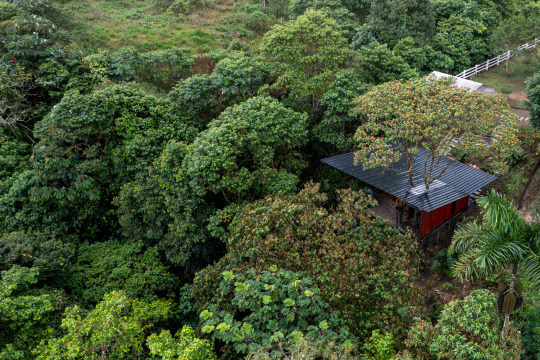
"A Lodge in the Pigüe"
“El Calvario” community, Pastaza province, Ecuador,
Mestizo Estudio Arquitectura
#art#design#architecture#minimal#nature#interior design#interiors#minimalism#retreat#trehhouse#lodge#cabin#ecuador#pigue tree#el calvario#pastaza#mestizo estudio arquitectura#rain forest
381 notes
·
View notes
Note

Saw this gorgeous moth when I was in Ecuador last month (Pastaza province). Looks like some sort of Io moth, but do you have a more specific ID?
Thank you!
Moth ID:
Hello, yes, you are absolutely correct, it looks very much to me like Automeris liberia, which I do not believe has a common name in English.
I believe I saw this moth in Colombia, near Buenaventura, as well.
430 notes
·
View notes
Text
Pailón del Diablo Waterfall, Ecuador: Pailón del Diablo Waterfall is a waterfall in the Andes of the South American country of Ecuador. It is one of the several waterfalls that are obtained by following the route of the Pastaza River in the Province of Tungurahua. It is a popular tourist attraction because of the vegetation that surrounds it and the rocks that divide the waterfall. It is about 80 meters high, and about 20 meters deep. Wikipedia
#Pailón del Diablo#Waterfall#Andes mountain range#Tungurahua Province#Ecuador#South America#South American Continent
185 notes
·
View notes
Text
How solar power is changing life in Ecuador's Amazon basin
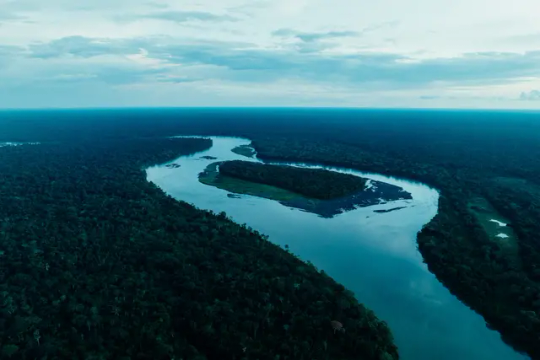
For more than 40 years, the local Indigenous people, the Achuar, have been advocating to stop oil development, which has ravaged large swaths of the Ecuadorian Amazon. But even as they fought against fossil fuels, gasoline was their only option to light their homes and power the boats tied to their livelihood. This area has the thinnest electric coverage in the country. But now a smattering of solar panels across 12 villages in a couple of Ecuador’s deeply forested eastern provinces are transforming life.
Solar power is shaping how they go about daily life in ways big and small, from how they get to work to how they negotiate their connections to the world beyond the Amazon.
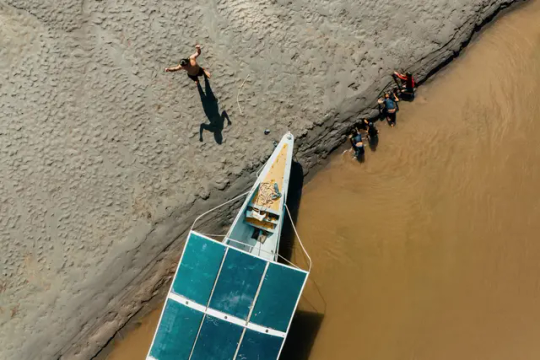
Photo above: A solar-powered electric boat
For generations, young men farmed the land, built huts or left their village to find work outside the jungle. Now solar panels are opening up other options.
In the Kapawi Solar Center, an open structure overlooking the Pastaza River, 20 solar panels power a dozen outlets strapped to bamboo poles. There, technicians such as Óscar Mukucham can charge up and hold workshops on how to install panels.
As a boy, Mukucham, now 23, had visions of solar boats moving through the river. Now he teaches others how to maintain them in the Amazon humidity.
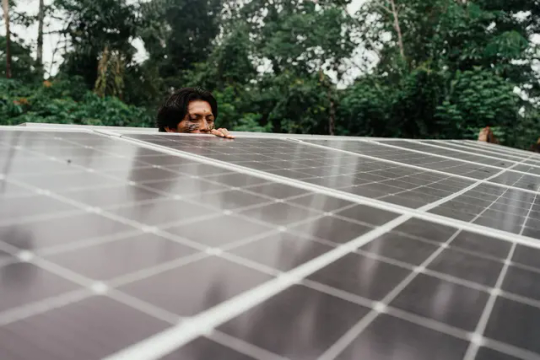
Solar power is also fueling eco-tourism. The Kapawi Ecolodge, a hotel managed by the community, boasts 64 panels that illuminate 10 cabins, the dining room and other hotel facilities for 24 hours a day.
The solar boats are so quiet, they make for ideal vessels for nature tours: They don’t scare away dolphins or birds.

For Canelos, the lamps and panels are enabling a bigger vision: powering the Amazon without scarring it with roads and poles. Solar energy connects them to the world beyond their home, while preserving the ancient traditions that have sprouted from its rich rainforest floor.
“We cannot talk about the fight against extractive activities if we are consuming fuel,” he said. “Just as the sun makes life possible on the planet, it also allows the Achuar to keep their culture alive.”

Source
#ecuador#amazon river#amazon basin#rural#solar power#solar power boats#solar farms#clean energy#transformation#latin america#indigenous peoples
19 notes
·
View notes
Text
Baños Waterfall Tour
Breakfast today was at Honey Coffee, it was a buzzing little spot where I enjoyed a cappuccino and a papaya bowl which turned out to be a hollowed out papaya filled with yoghurt, granola, and fruit. It was a little weird and other customers were staring at me as I tried to eat it with dignity, scraping pieces of papaya from the sides of the ‘bowl’. The tour guide said I would need to wait until 10:30am as I was currently the only person signed up. Eventually we ended up with 5 people and began our drive through a huge canyon with a fast flowing river between the cliffs. We crossed over Puente San Francisco and then the driver did a 7 point turn to get the double decker bus turned around to go back and collect another family of 4 in Baños, passed a dam and hydro power plant, and then we visited our first hop off stop which was two waterfalls intersecting into one river - Agoyán waterfall. We got some great photos here and then drove a tight windy road between two of Ecuador’s national parks, Sangay and although I didn’t write down the name of the other one and I could be wrong, looking at the map I think it was Llanganates. One waterfall on the other side of the gorge below was called the Snake waterfall as it was very thin and windy, and the other on our side of the gorge was 70m high and we couldn’t see the top but it soaked us all sitting at the top of the bus as we passed underneath! The next stop was at Rio Blanco Mega Park which offered a range of activities including ziplines, cable cars, and a bridge with glass panels to walk across. Everyone else in the group took the bus but I decided to pay the $7 and walk across the bridge to get a view of the waterfalls and the Rio Pastaza below. I was the only one on this bridge walking between two cliffs at least 100m in the air. I hopped back on the bus on the other side of the bridge and then we drove to our next stop just down the road at the Tarabita cable car. We joined the line and paid our $2 fee for the ride. While we waited I watched the driver, it was like an actual car with a driver, he was seated in the station and would use a clutch and accelerator to sent the cable car flying out over the cliff and then hold the brake to keep it there, and then drive it back in. Seeing it operated like this made me a bit more scared, fearing an engine failure of this literal ‘car’ 100m in the air trapped in a metal cage. But I got in the car with the rest of the group and we were sent out like all the others before us and it was great but the car was too crowded to get a very good photo or video of the waterfall running down the cliff on the other side. I was feeling a bit hungry here so I bought a fried plantain off the grill for $1 and it was delicious. The next stop was a sweet shop specialising in a guava/sugar sweet like a hardened jelly cube. It was much nicer than I expected and not too sweet so I bought a $1 block to take back home. The final stop on the tour was Pailon del Diablo, a huge waterfall down a narrow slippery path. The waterfall roared and was moving huge volumes of water constantly into rapids below. It was very crowded so I kept moving to get to a viewing platform that was out of the splash zone, I could’ve kept going around the back of the waterfall but I saw people that were soaked so I went back up the rickety old bridges. When we got back to Baños I headed to Cafe Colibri for a cappuccino to warm up, I was the only person in the cafe except for a boy doing his homework. The mother hadn’t heard me come in and sit down so she got a shock when she came out of the kitchen and saw me sitting there. She quickly got me a menu and scolded her son for not telling her that I’d come in. After my coffee I wandered around the town again to buy some souvenir magnets and t-shirts, and walked out to La Virgen thermal pool area to see that waterfall. For dinner I chose Frikadel for a burger, fries, and mojito to finish off the night and I had a nice spot on the rooftop to people-watch on the street below.
2 notes
·
View notes
Text
HELENA GUALINGA // ACTIVIST
“She is an Ecuadorian environmental and human rights activist from the Kichwa Sarayaku community in Pastaza, Ecuador. The majority of her female relatives are also activists. From a young age, Gualinga has witnessed the persecution of her family for standing against the interests of big oil companies and their environmental impact on Indigenous land. Several leaders members of her community have lost their life in violent conflicts against the government and corporations. She has stated for Yle that she sees her involuntary upbringing in such an agitated environment as an opportunity. Gualinga has become a spokesperson for the Sarayaku Indigenous community. Her activism includes exposing the conflict between her community and oil companies by carrying an empowering message among the youth in local schools in Ecuador. She also actively exposes this message to the international community hoping to reach policy-makers. Gualinga founded Polluters Out with Isabella Fallahi and Ayisha Siddiqa which aimed at fossil fuel industries. The movement was founded as a response to the failing of COP25.”


1 note
·
View note
Text
Según el apu, Daniel Simón Kamarampi, los peces se han ido del lago por el exceso del calor dejándolos sin alimentos. A través de un video el apu, Daniel Simón Kamarampi de la Federación de Comunidades Nativas Kandoshi del distrito de Pastaza (FECONACADIP) alertó de la disminución de peces en su territorio producto del cambio climático. Desde la provincia de Datem del Marañón, departamento de Loreto, el dirigente dijo que antes el territorio Kandozi contaba con una riqueza ictiológica única que les permitía tener una gran variedad de peces. Sin embargo, el panorama ha cambiado drásticamente por el incremento de la temperatura y la sedimentación del río Pastaza. “Espero que a través de la Asociación Interétnica de Desarrollo de la Selva Peruana (Aidesep) se haga visible nuestra problemática” dijo Daniel Simón, quien pidió al Estado reconocer la existencia del Gobierno Territorial Autónomo Nación Kandozi. En 2016 el Gobierno Territorial Autónomo del Pueblo Kandozi en la comunidad Musa Karusha se constituyó como gobierno autónomo en la comunidad nativa de Musa Karusha. El pueblo Kandozi que habita en el río Pastaza en Loreto y a la frontera con Ecuador, también se enfrenta a un deficiente sistema de salud. A inicios de marzo una niña de 10 años falleció al no ser atendida de forma oportuna. Un pueblo destacado por sus conocimientos relacionados a la pesca En 2023 el Ministerio de Cultura declaró como Patrimonio Cultural de la Nación a los Conocimientos, saberes, prácticas y oralidad del pueblo Kandozi relacionadas a la pesca tradicional en el lago Musa Karusha. Para la declaratoria se consideró el valor identitario, productivo, económico, social y cultural de la pesca kandozi; así como su importancia para la conservación y preservación de los recursos naturales. La pesca constituye una de las prácticas tradicionales y saberes productivos de mayor importancia dentro de la identidad cultural del pueblo Kandozi, toda vez que es una actividad fundamental para sus familias y, en particular, para aquellas asentadas alrededor del Lago Rimachi o Musa Karusha. Este saber productivo se realiza con fines de auto sustento, pero también para intercambios comerciales desde tiempos ancestrales. También se trata de una actividad sostenida, de carácter familiar y/o comunal, realizada principalmente por los varones. Así, se distinguen dos estaciones: la estación de pesca intensiva, que va desde julio hasta marzo del año siguiente (vaciante), descontando los periodos de veda entre noviembre y diciembre. Y la estación de pesca de sustento, entre los meses de abril y junio (creciente). Las técnicas de pesca, valores y significados, se transmiten a través de la enseñanza de padres a hijos. Los padres elaboran canoas pequeñas para enseñar a los hijos a pescar, siendo los seis años la edad promedio para iniciar este aprendizaje. Aprender a pescar es importante para los niños Kandozi, pues hacerlo correctamente demuestra a la comunidad que tienen capacidad para proveerse de alimento y a sus familias. }Los niños aprenden a reparar redes, elaborar flechas y otros implementos, ayudados por sus padres y hermanos. El aprendizaje de la caza y pesca forma parte del proceso de consolidación de la identidad y espiritualidad de los varones Kandozi. Fuente servindi.org

View On WordPress
0 notes
Text

🖥#LasAlasDeLaConciencia
Sábado 12.10.2024 - 17 hs.
El Tucu en el "Taa Loooco!!!" de la semana: gigantes de las redes sociales, recopilan cantidades masivas de datos de niños y adolescentes.
Tragedia en Amazonía: reportan nuevo derrame de petróleo en Río Pastaza, y habrían tres #comunidadesindígenas afectadas.
Mendoza: Gobernador Cornejo y el negocio minero. #NoMegaminería
Dr. Damián Verzeñassi en "Cuidar lis Territorios, para Sanar las Comunidades": los árboles, sostén de nuestras vidas.
#Contaminación: miles de contenedores de carga se han perdidos en el mar.
Zeta: el Gobierno argentino va por la privatización del agua potable.
Cristino en "La Vidriera de la Estupidez Humana": computadoras hechas con neuronas humanas.
"Reflexiones de Don Miguel": los distintos tipos de bosques en la Argentina. Parte 2.
Taña Transa-Kevich en "Verdad y Justicia": ¿más infraestructura turística en El Bolsón?
Tucumán: robó agua para su laguna artificial, y dejó a miles de personas sin servicio.
Abogada Cecilia Domínguez en "Por los Derechos, Decilo Fuerte": la ONU busca implementar un "nuevo" pacto del futuro. Parte 2.
ONU denuncia impacto en DDHH que causaron pruebas nucleares en Islas Marshall. #NoNuclear
Contenido Informativo Socioambiental
Área Prensa
Regional #Córdoba
#ConcienciaSolidaria ONG
Transmisión: Facebook.com/AlasConciencia
#MEDIOAMBIENTE #DERECHOSHUMANOS #Salud #Extractivismo #Educación #HistoriaAmbiental
"Volando hacia la Verdad"
@lasalasdelaconciencia
@concienciasolidariaong
#ConcienciaSolidariaONG
1 note
·
View note
Text
The Lair of the Devil.
Pailón del Diablo: The Devil's Cauldron
Pailón del Diablo, or "The Devil's Cauldron," is a spectacular waterfall located in Ecuador, near the town of Baños. Here’s a detailed introduction to this natural wonder:

Location and Geography
Location: Pailón del Diablo is situated in the Pastaza River gorge, a short distance from Baños de Agua Santa, a popular tourist town known for its thermal baths and adventure sports.
Waterfall: The waterfall cascades down from the Rio Verde (Green River) into a deep gorge, creating a breathtaking display of rushing water and mist. The name "Pailón del Diablo" translates to "The Devil's Cauldron," aptly describing the powerful and dramatic nature of the waterfall.
Natural Beauty and Surroundings
Scenic Hiking Trails: Visitors can access Pailón del Diablo via a short hike through lush cloud forest vegetation. The trail offers stunning views of the waterfall and the surrounding canyon landscape, providing ample opportunities for photography and nature appreciation.
Vegetation: The area around Pailón del Diablo is characterized by dense rainforest vegetation, including ferns, mosses, and orchids. The lush greenery enhances the waterfall's natural beauty and contributes to its pristine environment.

Cultural and Historical Significance
Indigenous Heritage: The region around Baños and Pailón del Diablo is inhabited by indigenous communities, including the Quechua people, who have a deep cultural connection to the land and its natural features.
Tourism and Development: Pailón del Diablo has become a popular tourist attraction in Ecuador, attracting visitors from around the world who come to witness its awe-inspiring beauty and explore the surrounding natural wonders.
Activities and Adventure
Waterfall Exploration: Visitors can get up close to Pailón del Diablo by walking across a suspension bridge that spans the gorge. This allows for a thrilling experience and a close-up view of the powerful waterfall.
Adventure Sports: Baños is known as the adventure capital of Ecuador, offering activities such as river rafting, canyoning, zip-lining, and hiking. Many visitors combine a visit to Pailón del Diablo with these adrenaline-pumping adventures.
Practical Information
Accessibility: Pailón del Diablo is accessible from Baños via a short drive or taxi ride, followed by a hike along a well-marked trail. The hike is suitable for most fitness levels but involves some uneven terrain and steps.
Best Time to Visit: The waterfall is most impressive during the rainy season (November to March) when the Rio Verde flows with greater volume. However, visiting during the dry season (June to September) offers clearer views and a quieter experience.
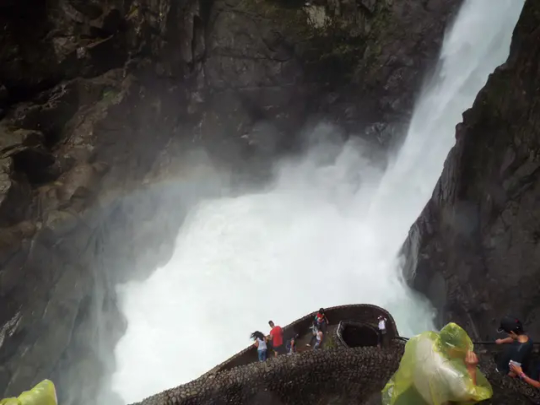
Conservation Efforts
Environmental Protection: Efforts are underway to preserve the natural beauty and biodiversity of Pailón del Diablo and its surrounding ecosystem. Sustainable tourism practices and conservation initiatives aim to minimize the impact of visitors on the fragile environment.
Conclusion
Pailón del Diablo, with its powerful waterfall, lush rainforest surroundings, and cultural significance, epitomizes the natural beauty and adventure opportunities that Ecuador has to offer. Whether you're seeking stunning landscapes, outdoor activities, or cultural immersion, a visit to Pailón del Diablo promises an unforgettable experience amidst the wonders of nature.
Worth to go 6/10 ( Dangerous for me T.T ) Thanks for reading ♥
0 notes
Text
Las ocho personas que viajaban en el helicóptero militar accidentado este viernes en la Amazonía de Ecuador fueron encontradas sin vida, según anunció en un comunicado el Ejército ecuatoriano. Entre las víctimas mortales hay cinco militares y tres civiles, funcionarios de la Secretaría de Gestión de Riesgos (SGR) del Gobierno ecuatoriano que llevaban ayuda humanitaria a sectores de la amazónica provincia de Pastaza, afectados por inundaciones ante la crecida de los ríos. Las víctimas fueron identificadas como el mayor Andrés Sierra, que pilotaba la aeronave; el teniente Jaime Cordones, que ejercía de copiloto; el sargento Leonardo Gutiérrez, que tenía la función de ingeniero de vuelo, y los cabos Cristian Morales y Édgar Montesdeoca, que eran mecánicos. Además de la tripulación viajaban también en el helicóptero Katya Aragón, Diego Ima y Erik Reyes para cumplir las actividades de la SGR.

View On WordPress
0 notes
Text
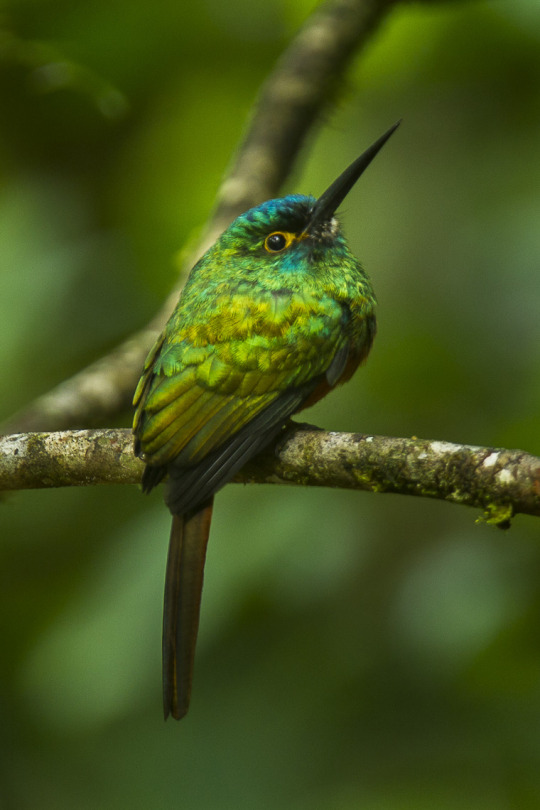
Coppery-chested Jacamar (Galbula pastazae), family Galbulidae, order Piciformes, Ecuador
photograph by Francesco Veronesi
835 notes
·
View notes
Text
Events 4.23 (after 1950)
1951 – Cold War: American journalist William N. Oatis is arrested for espionage by the Communist government of Czechoslovakia. 1961 – Algiers putsch by French generals. 1966 – Aeroflot Flight 2723 crashes into the Caspian Sea off the Absheron Peninsula, killing 33 people. 1967 – Soviet space program: Soyuz 1 (Russian: Союз 1, Union 1) a crewed spaceflight carrying cosmonaut Colonel Vladimir Komarov is launched into orbit. 1968 – Vietnam War: Student protesters at Columbia University in New York City take over administration buildings and shut down the university. 1971 – Bangladesh Liberation War: The Pakistan Army and Razakars massacre approximately 3,000 Hindu emigrants in the Jathibhanga area of East Pakistan (now Bangladesh). 1979 – SAETA Flight 011 crashes in Pastaza Province, Ecuador, killing all 57 people on board. The wreckage was not discovered until 1984. 1985 – Coca-Cola changes its formula and releases New Coke. The response is overwhelmingly negative, and the original formula is back on the market in less than three months. 1990 – Namibia becomes the 160th member of the United Nations and the 50th member of the Commonwealth of Nations. 1993 – Eritreans vote overwhelmingly for independence from Ethiopia in a United Nations-monitored referendum. 1993 – Sri Lankan politician Lalith Athulathmudali is assassinated while addressing a gathering, approximately four weeks ahead of the Provincial Council elections for the Western Province. 1999 – NATO bombs the headquarters of Radio Television of Serbia, as part of their aerial campaign against the Federal Republic of Yugoslavia. 2005 – The first YouTube video, titled "Me at the zoo", was published by co-founder Jawed Karim. 2013 – At least 111 people are killed and 233 injured as violence breaks out in Hawija, Iraq. 2018 – A vehicle-ramming attack kills 11 people and injures 15 in Toronto. A 25-year-old suspect, Alek Minassian, is arrested. 2019 – The April 2019 Hpakant jade mine collapse in Myanmar kills four miners and two rescuers, with at least 50 others missing and presumed dead.
0 notes
Text
katar ecuador vorhersage
🎰🎲✨ Erhalten Sie 500 Euro und 200 Freispiele, plus einen zusätzlichen Bonus, um Casinospiele mit nur einem Klick zu spielen! ✨🎲🎰
katar ecuador vorhersage
Die Wettervorhersage für Katar und Ecuador ist von großer Bedeutung für Menschen, die in diesen Ländern leben oder eine Reise dorthin planen. Das Wetter kann einen erheblichen Einfluss auf unsere täglichen Aktivitäten haben, sei es bei der Arbeit, Freizeit oder auf Reisen.
Katar liegt auf der Arabischen Halbinsel und ist für sein Wüstenklima bekannt. Die Sommer sind in Katar extrem heiß, mit Temperaturen, die regelmäßig über 40 Grad Celsius steigen können. Die Winter sind dagegen mild und angenehm, mit durchschnittlichen Temperaturen zwischen 15 und 25 Grad Celsius. Regenfälle sind selten und kommen sporadisch vor, meistens zwischen Dezember und März. Wenn Sie beabsichtigen, Katar zu besuchen, ist es ratsam, leichte und luftige Kleidung zu tragen sowie ausreichend Sonnenschutz mitzunehmen, da die Sonne sehr intensiv sein kann.
Ecuador liegt in Südamerika und zeichnet sich durch seine vielfältige Topographie aus. Das Land ist von der Äquatorlinie durchzogen und hat daher eine abwechslungsreiche Klimazonen. An der Küste herrscht ein tropisches Klima, mit hohen Temperaturen und hoher Luftfeuchtigkeit. Im Hochland, insbesondere in den Anden, ist das Klima aufgrund der Höhenlage ganzjährig mild. Die regenreichste Zeit in Ecuador ist von Dezember bis Mai, während die restlichen Monate als Trockenzeit gelten. Wenn Sie Ecuador besuchen möchten, empfiehlt es sich, sich über die jeweiligen Regionen zu informieren und entsprechende Kleidung einzupacken, um den klimatischen Bedingungen gerecht zu werden.
Unabhängig davon, ob Sie nach Katar oder Ecuador reisen, ist es wichtig, sich regelmäßig über die aktuellen Wettervorhersagen zu informieren. Dadurch können Sie Ihre Aktivitäten besser planen und sich angemessen darauf vorbereiten. Behalten Sie Temperatur, Niederschlagswahrscheinlichkeit und andere relevante Wetterdaten im Blick, um einen angenehmen Aufenthalt in diesen Ländern zu gewährleisten.
Katar Ecuador Reiseführer
Katar Ecuador, auch bekannt als der Galapagos des Festlandes, ist ein wunderschönes Reiseziel in Südamerika. Mit seiner faszinierenden Natur, der reichen Kultur und den abwechslungsreichen Aktivitäten zieht es jedes Jahr eine Vielzahl von Touristen an. In diesem Reiseführer möchten wir Ihnen die wichtigsten Informationen über Katar Ecuador geben und Ihnen helfen, das Beste aus Ihrer Reise herauszuholen.
Erkunden Sie die atemberaubende Natur: Katar Ecuador bietet eine einzigartige Naturlandschaft, die Sie faszinieren wird. Von den beeindruckenden Anden bis zur üppigen Amazonasregion gibt es viele Möglichkeiten, die Schönheit der Natur zu entdecken. Unternehmen Sie eine Wanderung durch den Cotopaxi-Nationalpark und bestaunen Sie den majestätischen Vulkan oder erkunden Sie den Yasuní-Nationalpark und erleben Sie die Vielfalt der Tierwelt hautnah.
Tauchen Sie in die Kultur ein: Um das wahre Ecuador zu erleben, sollten Sie unbedingt die kulturellen Schätze in Katar erkunden. Besuchen Sie das charmante Kolonialstädtchen Cuenca und schlendern Sie durch die engen Gassen, bewundern Sie die historischen Gebäude und besuchen Sie lokale Kunsthandwerkermärkte. Verpassen Sie nicht das Inti Raymi Festival, bei dem Sie traditionelle Tänze und Musik erleben können.
Abenteuerliche Aktivitäten: Katar Ecuador bietet zahlreiche Möglichkeiten für Outdoor-Abenteuer. Unternehmen Sie eine Rafting-Tour auf dem wilden Pastaza-Fluss oder machen Sie einen Ausflug zum Chimborazo, dem höchsten Berg Ecuadors. Für Adrenalin-Junkies empfiehlt sich ein Besuch des Baños de Agua Santa, wo Sie Ziplining oder Bungee-Jumping ausprobieren können.
Kulinarische Genüsse: Ecuador ist berühmt für sein vielfältiges kulinarisches Angebot. Probieren Sie die traditionelle ecuadorianische Küche, die aus frischen Zutaten wie Meeresfrüchten, Reis, Bohnen und exotischen Früchten besteht. Verpassen Sie nicht den Ceviche, ein Gericht aus rohem Fisch mit Limettensaft mariniert, oder das leckere Süßgebäck "Bollo de Pescado".
Katar Ecuador ist ein wahrer Schatz in Südamerika und bietet eine unvergessliche Reiseerfahrung. Mit seiner beeindruckenden Natur, der lebendigen Kultur und den abenteuerlichen Aktivitäten gibt es für jeden Reisenden etwas zu entdecken. Packen Sie Ihre Koffer und tauchen Sie ein in die Schönheit von Katar Ecuador!
Das Klima in Katar, Ecuador, ist von der Lage und der Höhe des Landes geprägt. Ecuador liegt in Südamerika und erstreckt sich vom Pazifik bis zur Andenregion. Dank dieser geografischen Vielfalt weist das Land eine große klimatische Vielfalt auf.
In der Küstenregion von Katar herrscht ein warmes und feuchtes Klima. Die Temperaturen liegen das ganze Jahr über zwischen 25 und 32 Grad Celsius. Die feuchte Luft vom Pazifik sorgt für eine hohe Luftfeuchtigkeit, was die Luft oft schwül erscheinen lässt. Regenfälle sind in dieser Region das ganze Jahr über zu erwarten, wobei sich die Regenzeit von Dezember bis Mai erstreckt. Die Küstenregion ist auch anfällig für tropische Wirbelstürme, insbesondere während der Hurrikansaison von Juni bis November.
Im Gegensatz dazu sind die Andenregionen von Katar deutlich kühler. Die höheren Lagen führen zu kühleren Temperaturen, die oft zwischen 14 und 20 Grad Celsius liegen. In den Hochanden kann die Temperatur nachts sogar unter den Gefrierpunkt fallen. Diese Regionen sind im Allgemeinen trockener als die Küstenregion, obwohl vereinzelte Regenfälle das ganze Jahr über möglich sind.
In den Amazonas-Regenwäldern von Katar herrscht ein tropisches Regenwaldklima. Hier sind hohe Temperaturen und hohe Luftfeuchtigkeit das ganze Jahr über vorherrschend. Die Durchschnittstemperaturen liegen zwischen 24 und 30 Grad Celsius. Regenfälle sind in dieser Region häufig und können das ganze Jahr über auftreten.
Es ist wichtig, das Klima in Katar bei Reisen oder Aufenthalten im Land zu berücksichtigen. Einzelpersonen sollten entsprechende Kleidung und Ausrüstung mitbringen, um den jeweiligen klimatischen Bedingungen gerecht zu werden. Es wird auch empfohlen, sich vor Reisen über die aktuelle Wetterlage zu informieren, um eventuelle Unwetter oder extreme Wetterbedingungen zu vermeiden.
Katar, auch bekannt als Katar Ecuador, ist ein wunderschönes Land in Südamerika, das reich an Kultur und Geschichte ist. Es gibt viele faszinierende Sehenswürdigkeiten, die Besucher aus der ganzen Welt anziehen. In diesem Artikel werden wir uns mit den vier Top-Sehenswürdigkeiten in Katar Ecuador befassen.
Die Galapagos-Inseln: Diese Inselgruppe ist weltweit für ihre einzigartige Tierwelt und ihre atemberaubende Naturschönheit bekannt. Hier können Besucher eine Vielzahl von Tieren wie Seelöwen, Riesenschildkröten und exotischen Vogelarten erleben. Tauchen und Schnorcheln sind hier beliebte Aktivitäten, um die farbenfrohen Korallenriffe und die Vielfalt der Meeresbewohner zu erkunden.
Das historische Zentrum von Quito: Die Hauptstadt Ecuadors, Quito, beherbergt ein wunderschön erhaltenes historisches Zentrum, das von der UNESCO zum Weltkulturerbe erklärt wurde. Hier können Besucher prächtige Kolonialarchitektur, eng gepflasterte Straßen, charmante Plätze und beeindruckende Kirchen wie die Basilika del Voto Nacional und die Compañía de Jesús bewundern. Ein Spaziergang durch die Gassen dieses historischen Viertels ist wie eine Reise in die Vergangenheit.
Der Cotopaxi-Nationalpark: Dieser Nationalpark ist Heimat des majestätischen Cotopaxi-Vulkans, einem der höchsten aktiven Vulkane der Welt. Wanderer und Abenteuerlustige können den Vulkan besteigen oder eine geführte Tour durch den beeindruckenden Nationalpark unternehmen. Hier können Sie die einzigartige Flora und Fauna der Andenregion erleben und die atemberaubende Landschaft mit grünen Tälern, malerischen Seen und schneebedeckten Gipfeln bewundern.
Die Mitad del Mundo: Nur wenige Kilometer außerhalb Quitos befindet sich die Mitad del Mundo, der Äquator. Hier können Besucher auf dem berühmten Äquatorlinien-Monument stehen und das Gefühl haben, gleichzeitig auf beiden Hemisphären zu stehen. Es gibt auch ein Museum, das die Kultur und Traditionen der indigenen Völker Ecuadors zeigt.
Katar Ecuador hat so viel zu bieten, von natürlicher Schönheit über faszinierende Geschichte bis hin zu einzigartigen geografischen Phänomenen. Wenn Sie auf der Suche nach einem abenteuerlichen und kulturell bereichernden Urlaubsziel sind, sollten Sie Katar Ecuador definitiv in Betracht ziehen.
Katar Ecuador, ein faszinierendes Land in Südamerika, bietet seinen Besuchern eine einzigartige Mischung aus atemberaubenden Landschaften, reicher Kultur und einer reichen Tierwelt. Wenn Sie planen, dieses wunderbare Land zu besuchen, ist es wichtig, die beste Reisezeit zu kennen, um das Beste aus Ihrer Reise herauszuholen. Hier sind die 5 besten Reisezeiten für Katar Ecuador:
Trockenzeit (Mitte Juni bis September): Die trockene Jahreszeit in Katar Ecuador dauert von Mitte Juni bis September. Dies ist eine großartige Zeit, um das Land zu besuchen, da die Niederschläge minimal sind und Sie Ihre Aktivitäten im Freien ohne Unterbrechungen genießen können. Die Temperaturen sind angenehm und die Sonnenscheinstunden sind lang.
Grüne Jahreszeit (Januar bis Mai): Die grüne Jahreszeit in Katar Ecuador erstreckt sich von Januar bis Mai. In dieser Zeit gibt es regelmäßige Regenfälle, die das Land in ein saftiges Grün verwandeln. Die Landschaft erstrahlt in voller Blüte, und die Tierwelt ist besonders aktiv. Es ist auch die beste Zeit, um die berühmten Galápagos-Inseln zu besuchen.
Walsaison (Juni bis September): Wenn Sie an der beeindruckenden Walbeobachtung interessiert sind, ist die Zeit von Juni bis September die beste Reisezeit für Sie. Während dieser Zeit ziehen Buckelwale von der Antarktis in die warmen Gewässer vor der Küste Ecuadors. Es ist ein unvergessliches Erlebnis, die majestätischen Wale in ihrer natürlichen Umgebung zu beobachten.
Karneval (Februar oder März): Der Karneval in Katar Ecuador ist ein farbenfrohes Fest, das jedes Jahr im Februar oder März stattfindet. Es ist eine großartige Zeit, um die lokale Kultur zu erleben und an aufregenden Paraden und Feierlichkeiten teilzunehmen. Die Städte sind mit Musik, Tanz und traditionellen Kostümen gefüllt. Der Karneval in Katar Ecuador ist zweifellos ein Höhepunkt des Jahres.
Vogelbeobachtungssaison (Oktober bis Februar): Katar Ecuador ist berühmt für seine Vielfalt an Vogelarten. Die beste Zeit, um Vögel zu beobachten, ist von Oktober bis Februar. Während dieser Zeit ziehen viele Zugvögel in das Land, um die milden Temperaturen und die reiche Nahrungsquelle zu nutzen. Naturliebhaber haben die Möglichkeit, seltene und exotische Vogelarten zu entdecken.
Egal zu welcher Jahreszeit Sie Katar Ecuador besuchen möchten, es gibt immer etwas Besonderes zu entdecken. Das Land bietet eine breite Palette an Aktivitäten und Attraktionen, die jeden Besucher begeistern werden. Planen Sie daher Ihre Reise entsprechend der für Sie am besten geeigneten Reisezeit.
0 notes
Text
valamennyi ayahuasca
...
Roberta Louis: As you continued to drink ayahuasca, or natem, during your healing, you had some profound visionary experiences. Would you tell us about a couple of these?
Margaret de Wys: We continued doing healing ceremonies about three times a week. Every time, I was terrified. I would see monstrous visions and spirits. Once, I was forced inside the mouth—the size of a garage door—of a giant anaconda. I passed through diamond-shaped portals, going deeper and deeper, where I was introduced to mysteries.
During one ceremony, the spirits were comically bizarre. Microwave ovens, washing machines, and other appliances flew past jungle palms. The spirits in the trees said, “Oh, your quaint, cozy, oh-so-comfortable life. Hah! You stand at the abyss of nothingness and death.” They assaulted me, saying, “Become your own hero. Sink or swim. Sink or swim.”
Another night, we were on an island in the Pastaza River. Carlos was healing his aunt Tia, who had been suffering from hip and lower abdominal pains. He called, “Ven acá, Margarita.” Then he handed me a pair of rattles. A spirit jumped inside my body and began shaking my arm, sending healing energy into Tia. Then Carlos had me touch Tia’s uterus. A small child popped out from her groin and looked at Carlos and me. We looked at each other—Hey, you saw that, too? The girl flew into the bonfire and disintegrated. The next morning, Tia announced her pain was almost gone and said she had better range of motion.
...
RL: I understand that you experienced Carlos actually shape-shifting into a jaguar in a ceremony. Would you talk a little about that?
MDW: During my first healing with natem, a black jaguar stalked through the night. It paced, circled the healing area, and entered Carlos. The animal in him was seething with power. A growl rose from my throat as an aggressive female jaguar came into my body. My hands turned into paws, claws extended. Carlos and I were fighting. He tried to dominate me. I fought for territorial rights—for the right to survive. People were looking and scooting away. Cat sounds split the air.
A part of me witnessed these extraordinary feats. It’s indescribable to have a wild, untamable animal inside you. I was moving faster—and fighting better—than humanly possible. I had a fierce, unstoppable power. The jaguar in Carlos was wild and brutal. Eventually, Carlos smacked me on the head with a condor fan, and the jaguar left me. The next day, everyone talked about seeing the two jaguars.
1 note
·
View note
Text

Pastaza marsupial frog (Gastrotheca longipes) - Yasuni National Park Ecuador
1 note
·
View note
Photo
Pailon del Diablo Waterfalls in Baños, Ecuador: When To Visit For the Best Experience
Devil’s Cauldron, another name for the falls. It’s right on the Rio Pastaza, part of the Amazon River, and there’s an old story about the Virgin Mary appearing here to keep the locals safe from the volcano.
Pailon del Diablo is located on the route between Banos and Puyo, and there are different ways to reach there.
Pailon del Diablo is a waterfall on private land, hence there is an admission fee. The entrance fee is $2 and must be paid at a restaurant on the route leading to the waterfall. Keep in mind, there are two separate entry points that we cover below.

Pailon del Diablo (Devil’s Cauldron), Banos, Ecuador
190 notes
·
View notes